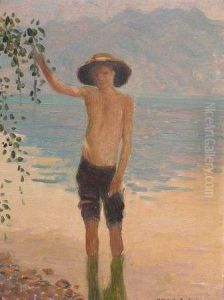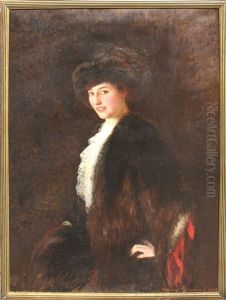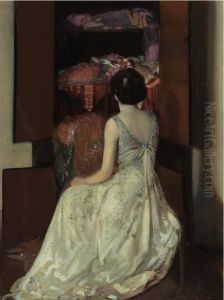Howard Gardiner Cushing Paintings
Howard Gardiner Cushing was an American painter, known primarily for his portraits and decorative works that embodied the American Impressionist style. Cushing was born on October 17, 1869, in New York City to a wealthy and socially prominent family. His brother was the neurosurgeon Harvey Cushing, who would later become famous for his pioneering work in brain surgery. Howard Cushing enjoyed the benefits of a cultured upbringing, which nurtured his artistic talents from an early age.
Cushing studied art at the Art Students League in New York and later traveled to Paris to continue his education at the Académie Julian under the tutelage of William-Adolphe Bouguereau and Tony Robert-Fleury. During his time in Europe, he was exposed to the works of the Impressionists and other contemporary movements, which influenced his style significantly. Cushing's early works often featured landscapes and figural compositions, but he gradually shifted his focus to portraiture.
Upon returning to the United States, Cushing settled in Newport, Rhode Island, where he became a part of the art colony there and established himself as a portraitist of the American elite. His portraits were characterized by a vibrant use of color and a loose brushwork that echoed the Impressionist technique, yet his work maintained a certain formality that appealed to his high society clientele. Cushing's subjects included many notable figures of the time, and his work was well-received, with exhibitions at prestigious institutions such as the National Academy of Design and the Boston Art Club.
Tragically, Cushing's life and career were cut short when he died on October 6, 1916, in his late forties. Despite his relatively short career, Howard Gardiner Cushing left behind a legacy of elegant portraits that capture the spirit of the Gilded Age and the early American modernist sensibility. His works remain in collections of major museums and continue to be appreciated by art enthusiasts for their contribution to American Impressionism and portraiture.


